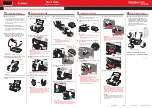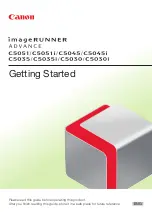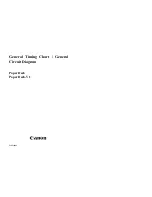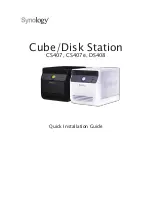
Appendix-4
ADVANCED OPERATION GUIDE
Basis Weight
Basis weight is the weight of a standard quantity of paper. In the traditional system
the standard quantity is a ream consisting of 500 sheets measuring 17 × 22 inches
each. In the metric system the standard quantity is 1 square meter.
Paper that is too light or too heavy can cause misfeeding, jams, and premature wear
of the machine. Uneven paper weight can cause multiple feeds, print defects, poor
toner fusing, blurring, and other print quality problems. The proper weight is 60 to
105 g/m² for the paper cassette, and 60 to 163 g/m² for the MP tray.
Thickness (Caliper)
Thick paper is referred to as high-caliper paper and thin paper as low-caliper paper.
The paper used with the machine should be neither extremely thick nor extremely
thin. If you are having problems with paper jams, multiple feeds, and faint printing,
the paper you are using may be too thin. If you are having problems with paper jams
and blurred printing the paper may be too thick. The proper thickness is 0.086 to
0.110 mm (3.4 to 4.3 mils).
Moisture Content
Moisture content is defined as the percent ratio of moisture to the dry mass of the
paper. Moisture can affect the paper’s appearance, feed ability, curl, electrostatic
properties, and toner fusing characteristics.
The moisture content of the paper varies with the relative humidity in the room. When
the relative humidity is high and the paper absorbs moisture, the paper edges
expand, becoming wavy in appearance. When the relative humidity is low and the
paper loses moisture, the edges shrink and tighten, and print contrast may suffer.
Wavy or tight edges can cause misfeeding and alignment anomalies. The moisture
content of the paper should be 4 to 6%.
To ensure the proper moisture content it is important to store the paper in a controlled
environment. Some tips on moisture control are:
•
Store paper in a cool, dry location.
•
Keep the paper in its wrapping as long as possible. Rewrap paper that is not in
use.
•
Store paper in its original carton. Place a pallet etc. under the carton to
separate it from the floor.
•
After removing paper from storage, let it stand in the same room as the
machine for 48 hours before use.
•
Avoid leaving paper where it is exposed to heat, sunlight, or damp.
Paper Grain
When paper is manufactured, it is cut into sheets with the grain running parallel to
the length (long grain) or parallel to the width (short grain). Short grain paper can
cause feeding problems in the machine. All paper used in the machine should be
long grain.
Other Paper Properties
Porosity
: Refers to the density of the paper structure; that is, to how openly or
compactly the fibers are bonded.
Summary of Contents for OP1018
Page 8: ...Introduction viii ADVANCED OPERATION GUIDE ...
Page 78: ...User Login Management 6 6 ADVANCED OPERATION GUIDE ...
Page 116: ...Using COMMAND CENTER 8 30 ADVANCED OPERATION GUIDE ...
Page 122: ...Optional Equipment 9 6 ADVANCED OPERATION GUIDE ...
Page 134: ...Appendix 12 ADVANCED OPERATION GUIDE ...
Page 140: ...Glossary Glossary 6 ADVANCED OPERATION GUIDE ...
Page 143: ...Index ADVANCED OPERATION GUIDE Index 3 U User login 6 1 8 7 V Volume 5 9 Z Zoom 1 3 2 8 ...
Page 144: ...Index Index 4 OPERATION GUIDE ...
Page 146: ... 2004 is a trademark of Kyocera Corporation ...
Page 147: ... 2005 is a trademark of Kyocera Corporation ...
Page 148: ...Revision 1 0 2005 2 ...
















































